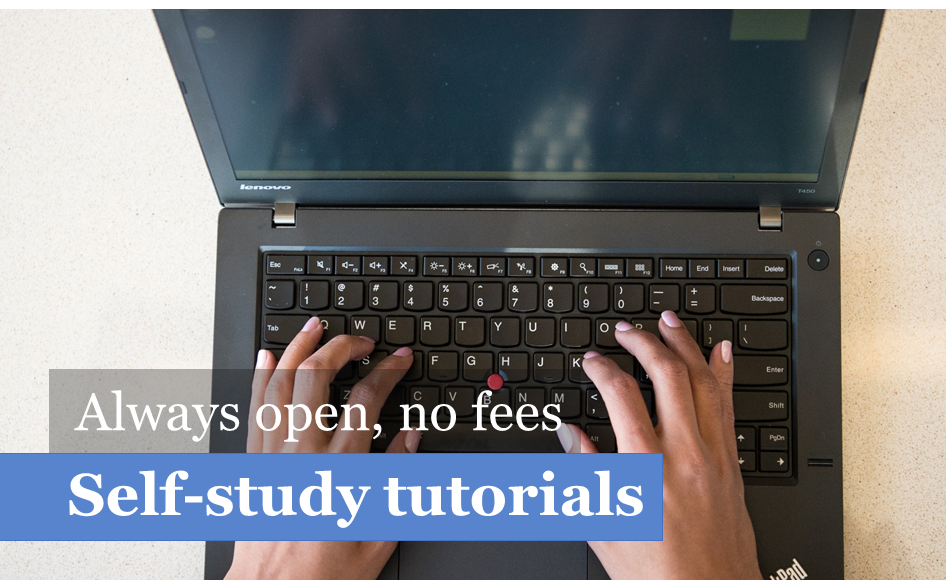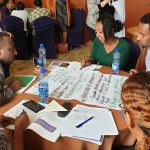
INASP’s self-study tutorials reach learners around the world
Over the past three years INASP has expanded its collection of online courses to include self-study tutorials. Ravi Murugesan discusses what these tutorials are and shares feedback on their impact so far.
Online teaching and learning have come to the forefront of discussions about education over the past year and a half. And for INASP this has provided opportunities both to share our expertise and to innovate to address new needs that we see within our networks.
One of those new needs identified has been the desire for continued skills development during periods of time where, for example, researchers might not be able to travel to do research in the field or go into their universities to attend face-to-face classes or meetings. While self-study courses are very common in the plethora of opportunities to learn online, at INASP we have largely focussed on offering facilitated or moderated courses since our first online course in 2011. Even our massive open online courses (MOOCs) have a good level of facilitation, and learners can expect to receive answers to their questions from a team of guest facilitators.
It was only in 2019 that we made a foray into self-study courses, as part of our Global Platforms for Equitable Knowledge Ecosystems (GPEKE) project. We called these courses ‘tutorials’ to distinguish them from our facilitated courses. Our first self-study tutorial was on the topic of search strategies.
Last year, in response to the COVID-19 pandemic and the increased demand for online learning opportunities, we launched three more tutorials in quick succession. Our tutorials, listed below, can be easily accessed from the homepage of INASP Moodle, our online learning platform.
- Search Strategies
- Critical Thinking
- Basics of Grant Proposal Writing
- Facilitating Events and Courses in an Online World
In keeping with our low-bandwidth approach, all of the tutorials contain text-based content. The learning resources, however, are interactive with embedded questions and prompts for reflection. Some also include videos, audio content and interactive exercises such as mini quizzes and matching tasks, but we ensure that higher bandwidth activities are not required for course completion.
In each tutorial, we provide a detailed introduction and address technical queries the learners might have. We also provide a resource on preparing to learn online, which can be found on every enrolment page, and this is especially geared towards first-time online learners. However, there is no direct or personalised support available to tutorial participants.
Completion success
In spite of the lack of such support, it appears that many of the tutorial participants are managing well. As of June 2021, more than 3400 individuals (45% female) from around 120 countries have enrolled in these tutorials, with more than 600 of them joining more than tutorial.
Participants can stay enrolled in the tutorials for as long as they would like and learn at their own pace. Nevertheless, we have a system of automated reminders to encourage participants to progress through the tutorial as per the recommended schedule. A completion certificate is generated for a participant once they meet the completion criteria, which usually includes passing one or more multiple-choice quizzes. The highest completion rate we have seen is for the Search Strategies tutorial, in which 803 out of 1766 participants (45%) have received a certificate so far. This could be because the tutorial is organised in the form of ‘steps’, with each step building on the previous one.
Here are some excerpts from the feedback we have received:
“Even though its offered through a virtual platform, the absence of a facilitator was not at all felt, since the activities throughout the course were made in a very engaging way.”
“I really appreciate that there is such kind of course which is more beneficial than just watching tutorial videos. It can directly be applicable in my context so I have shared the information to my colleagues.”
“These type of short courses offered by INASP is very helpful to me. This is very important to me as a teacher because always I’m looking for new information to give to my students in my teaching sessions.”
We also had the opportunity last year to see some of the ways that self-study tutorials differ from facilitated courses when we ran a light-touch facilitated version of the critical thinking course. Although feedback indicated that there were some continuing advantages to having facilitation with online learning, the satisfaction levels for both facilitated and self-study versions were very high. And, for some people, the complete flexibility about timing was very much appreciated, especially with the increased uncertainty during the pandemic.
You can learn more about our self-study tutorials on INASP Moodle: https://moodle.inasp.info

 Previous Post
Previous Post Next Post
Next Post


